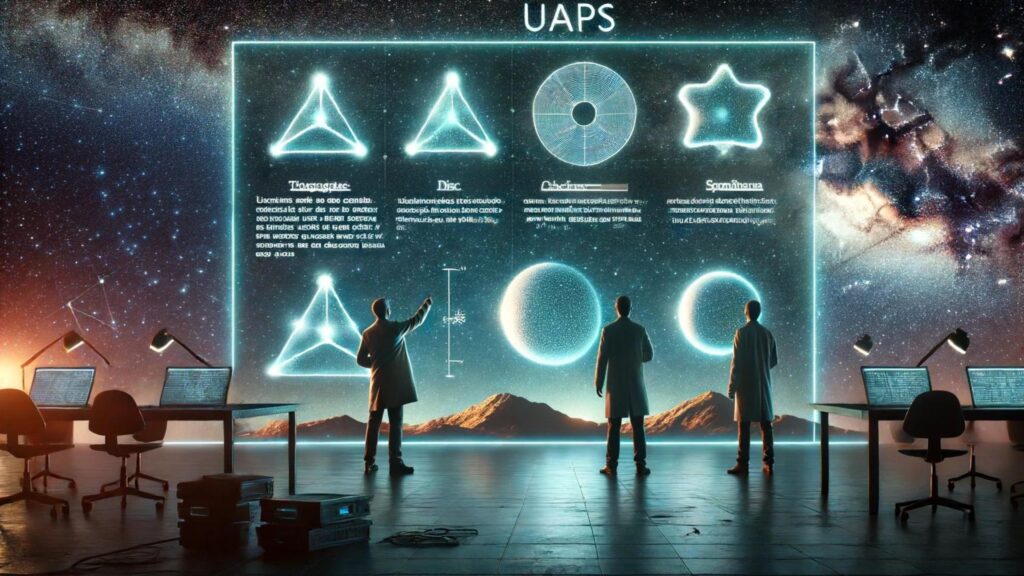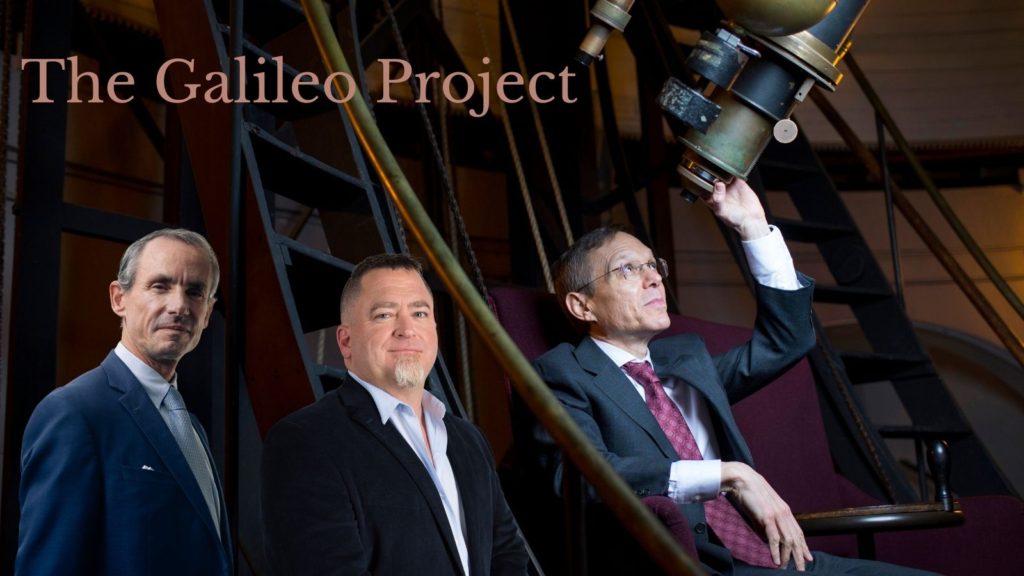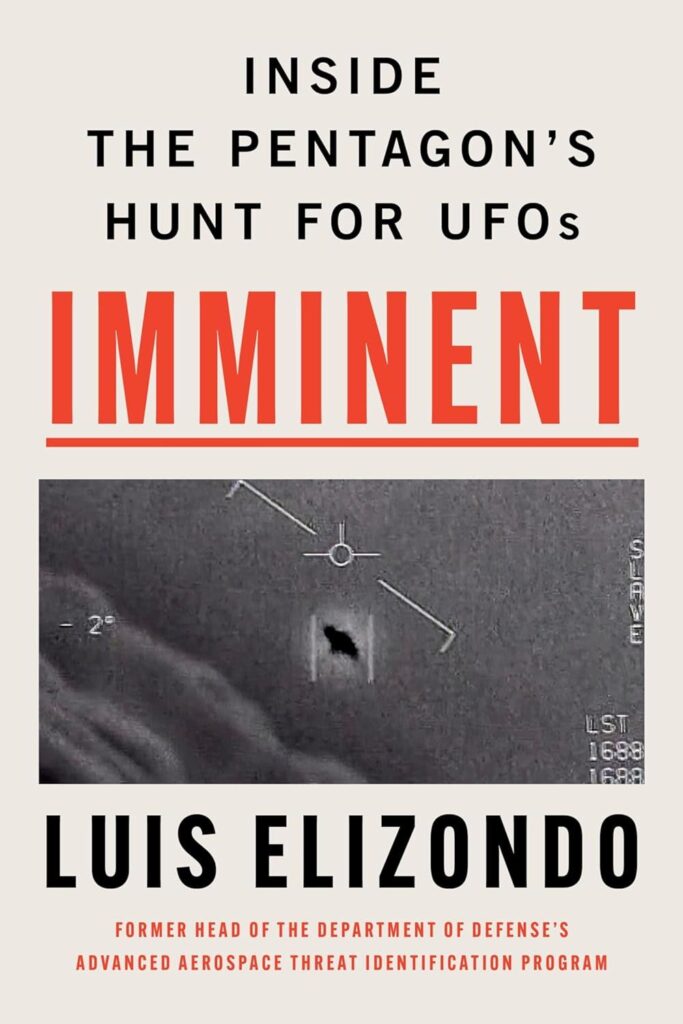Uncover the latest scientific advances, theories, and citizen science contributions in UAP and UFO research. Discover new insights today.
The Science Behind UAPs: What We Know So Far

Unidentified Aerial Phenomena (UAPs), commonly referred to as UFOs, have intrigued and baffled humanity for decades. With recent developments and government disclosures, the scientific community is taking a closer look at these mysterious objects. In this blog post, we’ll explore the current scientific understanding of UAPs, examining the evidence and possible explanations.
Understanding UAPs: Definitions and Characteristics

UAPs are objects observed in the sky that cannot be immediately identified. They exhibit flight characteristics and behaviors that defy conventional explanations, such as extreme speed, sudden acceleration, and the ability to maneuver in ways that challenge our understanding of physics.
Recent Scientific Studies
In recent years, the scientific investigation of UAPs has gained significant momentum, driven by both government initiatives and independent research organizations. Here’s a closer look at some of the most notable developments.
Pentagon’s UAP Task Force
In 2020, the U.S. Department of Defense established the Unidentified Aerial Phenomena Task Force (UAPTF) to investigate and understand UAPs observed by military personnel. The UAPTF’s preliminary report, released in June 2021, acknowledged that out of 144 UAP sightings reported by military aviators between 2004 and 2021, 143 remained unexplained. This report marked a significant shift in government transparency regarding UAPs, admitting that some of these phenomena exhibited flight characteristics that challenge conventional aerodynamics.
NASA’s UAP Study
In October 2022, NASA announced it would begin a nine-month study to examine UAPs from a scientific perspective. Led by astrophysicist David Spergel, the study aims to identify and categorize UAPs using existing satellite data and improve data collection methods for future observations. NASA’s involvement underscores the growing legitimacy of UAP research within the scientific community.

Scientific Coalition for UAP Studies (SCU)
The SCU is a group of scientists, engineers, and researchers dedicated to the scientific study of UAPs. One of their most detailed analyses is the investigation of the USS Nimitz UAP encounter in 2004. This incident involved several U.S. Navy pilots who observed a Tic-Tac-shaped object exhibiting extraordinary flight capabilities. The SCU’s report provided a thorough examination of radar data, pilot testimonies, and video evidence, concluding that the object’s movements could not be explained by current technology or known natural phenomena.
Harvard’s Galileo Project

In 2021, Harvard astronomer Avi Loeb launched the Galileo Project, an initiative to systematically search for evidence of extraterrestrial technological artifacts near Earth. The project aims to use a network of ground-based telescopes, cameras, and computers to detect, track, and analyze UAPs and other interstellar objects. By applying rigorous scientific methods, the Galileo Project hopes to determine whether UAPs are of extraterrestrial origin or have more mundane explanations.
Recent Sightings and Government Response
In 2023, the All-domain Anomaly Resolution Office (AARO) was established by the U.S. government to expand upon the work of the UAPTF. AARO is tasked with investigating UAPs across multiple domains, including air, sea, and space. This new office aims to provide a more comprehensive understanding of UAPs and address national security concerns.

Moreover, in May 2023, whistleblower David Grusch, a former intelligence officer, claimed in a congressional hearing that the U.S. government possesses “intact and partially intact” alien vehicles. Grusch’s testimony has sparked widespread media coverage and renewed public interest in UAPs, emphasizing the need for transparent and scientific investigation.
Conclusion: The Path Forward
While the scientific community has made significant strides in understanding UAPs, much remains to be discovered. Continued research, open-minded investigation, and collaboration between scientists, governments, and citizen scientists are essential for unraveling the mysteries of UAPs.
As we look to the future, the potential for groundbreaking discoveries remains high. Whether UAPs represent advanced human technology, unknown natural phenomena, or even extraterrestrial visitors, the pursuit of knowledge will undoubtedly lead to exciting developments in our understanding of the universe.
Scientific Organizations and Their Rigorous Methods

In addition to government efforts, independent organizations have been pivotal in advancing the scientific study of UAPs. These organizations use rigorous scientific methods to analyze UAP incidents, providing valuable insights that complement official investigations.
Scientific Coalition for UAP Studies (SCU)
The Scientific Coalition for UAP Studies (SCU) is at the forefront of independent UAP research. This group comprises scientists, engineers, and researchers dedicated to applying scientific rigor to the study of UAPs. The SCU has been instrumental in analyzing some of the most compelling UAP cases.
One of the SCU’s landmark studies is the analysis of the USS Nimitz incident from 2004. This incident involved multiple U.S. Navy pilots and radar operators who observed a Tic-Tac-shaped object performing maneuvers that defied conventional aerodynamics. The SCU’s comprehensive report on the Nimitz encounter included an in-depth examination of radar data, pilot testimonies, and video evidence. The analysis suggested that the observed object exhibited advanced propulsion technology beyond current human capabilities, moving at hypersonic speeds and making abrupt changes in direction without any visible means of propulsion.
Latest SCU Research and Findings
Recently, the SCU has expanded its research efforts to include other notable UAP incidents. In 2023, the SCU released a detailed report on the USS Omaha incident, where a spherical object was observed and recorded descending into the ocean without a splash. The SCU’s analysis of this event included a review of the video footage, interviews with witnesses, and a study of the radar data, concluding that the object’s behavior was consistent with advanced technology not currently known to be possessed by any nation.
Collaboration with Academic Institutions
The SCU collaborates with various academic institutions to enhance the scientific study of UAPs. For instance, they have partnered with universities to conduct spectral analysis of UAP footage, aiming to identify the material composition of these objects. Such collaborations bring additional expertise and resources, helping to advance the field of UAP research.
Peer-Reviewed Publications and Conferences
The SCU also emphasizes the importance of peer-reviewed research. They regularly publish their findings in scientific journals and present at conferences dedicated to aerospace, physics, and anomalous phenomena. By subjecting their work to peer review, the SCU ensures that their research meets high scientific standards and contributes to the broader scientific discourse on UAPs.
Conclusion: The Path Forward
While the scientific community has made significant strides in understanding UAPs, much remains to be discovered. Continued research, open-minded investigation, and collaboration between scientists, governments, and citizen scientists are essential for unraveling the mysteries of UAPs.
As we look to the future, the potential for groundbreaking discoveries remains high. Whether UAPs represent advanced human technology, unknown natural phenomena, or even extraterrestrial visitors, the pursuit of knowledge will undoubtedly lead to exciting developments in our understanding of the universe.
Theories and Hypotheses

Scientists have proposed various hypotheses to explain UAPs. These range from conventional explanations, such as misidentified aircraft, atmospheric phenomena, or advanced drones, to more speculative theories involving extraterrestrial technology or unknown natural phenomena. Each theory reflects different aspects of the observed phenomena and contributes to a comprehensive understanding of UAPs.
Advanced Human Technology
One prevalent hypothesis is that some UAPs might be classified as military aircraft or experimental drones. Governments around the world invest heavily in developing cutting-edge technology for defense purposes, leading to the creation of advanced aircraft that may not be publicly known. However, the extreme capabilities observed in many UAP reports often exceed current known technologies, raising questions about their origins.
Notable Cases and Insights
1. The Black Project Hypothesis: Some researchers suggest that UAPs could be the result of secretive “black projects” conducted by military organizations. These projects often involve advanced aeronautical and propulsion technologies that are decades ahead of publicly known capabilities. For example, the U.S. military’s development of stealth aircraft, such as the F-117 Nighthawk, was kept secret for many years before being revealed to the public.
2. Breakthrough Propulsion Technology: Reports of UAPs exhibiting hypersonic speeds, rapid acceleration, and sudden changes in direction without visible means of propulsion suggest the possibility of breakthrough technologies. These could include advanced propulsion systems such as magnetohydrodynamic drives or field propulsion systems, which remain theoretical but are being explored in research labs.
Natural Phenomena

Certain atmospheric or plasma phenomena could account for some UAP sightings. These natural occurrences can create visual effects that are easily misinterpreted as solid objects.
Examples of Natural Explanations
1. Ball Lightning: Ball lightning is a rare and poorly understood atmospheric phenomenon that manifests as glowing, spherical objects. Witnesses often describe them as moving erratically and disappearing suddenly, which can resemble UAP behavior.
2. Transient Luminous Events: Events such as sprites, blue jets, and elves occur high in the Earth’s atmosphere and can produce bright, brief flashes of light. These phenomena are often seen during thunderstorms and can be mistaken for UAPs.
Extraterrestrial Hypothesis

The most intriguing and speculative hypothesis is that some UAPs could be of extraterrestrial origin. This theory suggests that advanced civilizations might be observing Earth using technologies far beyond our own.
Support and Criticism
1. Historical Context: The idea of extraterrestrial visitors is not new. Ancient texts and art across various cultures depict strange objects in the sky, leading some to believe that contact with extraterrestrial beings has been occurring for millennia.
2. Modern Evidence: Recent testimonies from credible witnesses, including military personnel and pilots, add weight to the extraterrestrial hypothesis. Whistleblowers like David Grusch have claimed that governments possess intact alien vehicles, fueling public interest and scientific curiosity.
3. Scientific Scrutiny: While the extraterrestrial hypothesis is captivating, it faces significant scientific scrutiny. Critics argue that extraordinary claims require extraordinary evidence, and current UAP data is insufficient to conclusively prove the presence of extraterrestrial technology.
Conclusion: The Path Forward
While the scientific community has made significant strides in understanding UAPs, much remains to be discovered. Continued research, open-minded investigation, and collaboration between scientists, governments, and citizen scientists are essential for unraveling the mysteries of UAPs.
As we look to the future, the potential for groundbreaking discoveries remains high. Whether UAPs represent advanced human technology, unknown natural phenomena, or even extraterrestrial visitors, the pursuit of knowledge will undoubtedly lead to exciting developments in our understanding of the universe.
Technological and Methodological Advances

The advancement of technology has greatly enhanced our ability to study UAPs. High-resolution satellite imagery, advanced radar systems, and infrared sensors provide more detailed observations than ever before. Machine learning and AI are also being used to analyze large datasets of sightings and identify patterns that could lead to new insights. These technological and methodological advances are transforming our understanding of UAPs and opening up new avenues for investigation.
High-Resolution Satellite Imagery
One of the most significant technological advancements in UAP research is the use of high-resolution satellite imagery. Satellites equipped with powerful cameras can capture detailed images of objects and phenomena in Earth’s atmosphere from space. This technology allows researchers to monitor and analyze UAPs over large areas and in various conditions.
Example: Project SCOPEIn 2022, the project Surveillance for Climate and Orbital Phenomena Evaluation (SCOPE) was initiated to use satellite imagery for UAP detection. By analyzing high-resolution images, SCOPE aims to identify and categorize UAPs based on their visual signatures and flight patterns. This project has already produced intriguing findings, including the identification of several anomalous objects that warrant further investigation.
Advanced Radar Systems

Advanced radar systems are another critical tool in the study of UAPs. Modern radar technology can detect objects at great distances and provide precise data on their speed, altitude, and trajectory. Military and civilian radar systems have been instrumental in documenting UAP encounters and providing credible evidence of their existence.
Example: USS Princeton IncidentThe USS Princeton, part of the USS Nimitz Carrier Strike Group, used its advanced AN/SPY-1 radar system to track the infamous “Tic-Tac” UAP in 2004. The radar data showed the object moving at hypersonic speeds and performing maneuvers that defied known aerodynamic principles. This incident remains one of the most well-documented UAP encounters, thanks in large part to advanced radar technology.
Infrared Sensors
Infrared sensors have revolutionized the way we detect and study UAPs. These sensors can capture thermal signatures of objects, revealing details that are not visible to the naked eye. Infrared technology is particularly useful for detecting UAPs at night or in low-visibility conditions.
Example: FLIR1 VideoIn 2015, the U.S. Navy released the FLIR1 video, showing an encounter between Navy pilots and a UAP off the coast of San Diego. The infrared footage captured by the aircraft’s Forward-Looking Infrared (FLIR) camera revealed a rapidly moving object with no visible propulsion system. This video has become a key piece of evidence in UAP research, demonstrating the capabilities of infrared technology in capturing detailed observations.
Machine Learning and AI
The application of machine learning and artificial intelligence (AI) in UAP research is a recent but rapidly growing field. These technologies can analyze vast amounts of data, identify patterns, and make predictions that would be impossible for humans to achieve manually. AI algorithms are being used to sift through thousands of UAP reports, radar data, and satellite images to detect anomalies and correlations.
Example: Project ArgusLaunched in 2023, Project Argus utilizes AI to analyze global UAP data collected from various sources, including civilian reports, military sightings, and sensor data. The project’s AI algorithms have identified several hotspots of UAP activity and have uncovered patterns suggesting that certain environmental factors, such as geomagnetic disturbances, may be linked to increased UAP sightings. Project Argus represents a significant step forward in leveraging AI for UAP research.
Conclusion: The Path Forward
While the scientific community has made significant strides in understanding UAPs, much remains to be discovered. Continued research, open-minded investigation, and collaboration between scientists, governments, and citizen scientists are essential for unraveling the mysteries of UAPs.
As we look to the future, the potential for groundbreaking discoveries remains high. Whether UAPs represent advanced human technology, unknown natural phenomena, or even extraterrestrial visitors, the pursuit of knowledge will undoubtedly lead to exciting developments in our understanding of the universe.
The Role of Citizen Science

Citizen scientists play a crucial role in UAP research. Organizations like MUFON (Mutual UFO Network) encourage the public to report sightings and contribute to a growing database of UAP encounters. This collaborative approach allows for a more comprehensive understanding of the phenomenon.
MUFON and Public Engagement
The Mutual UFO Network (MUFON) is one of the oldest and largest civilian organizations dedicated to UAP research. Founded in 1969, MUFON’s mission is to investigate and share information about UAPs. The organization operates a global network of field investigators who respond to sighting reports, conduct interviews, and collect physical evidence. MUFON’s comprehensive database, which includes thousands of reports from around the world, is a valuable resource for researchers and the public alike.
Example: MUFON Case Management System (CMS) MUFON’s CMS is an online platform where the public can report UAP sightings. The system allows for the collection of detailed information, including the date, time, location, and description of the sighting, as well as any available photos or videos. MUFON investigators then follow up on these reports, adding credibility and depth to the database.
Collaboration with Scientists
Citizen science initiatives like those led by MUFON provide a wealth of data that professional scientists can analyze. Collaborations between citizen scientists and academic researchers have led to significant discoveries and advancements in UAP research. By combining the large volume of reports from the public with scientific expertise, researchers can identify patterns, correlations, and potentially explain certain phenomena.
Example: Project PhoenixIn 2022, MUFON launched Project Phoenix, a collaborative effort with several universities to analyze UAP reports using advanced statistical methods and machine learning. The project aims to identify common characteristics among sightings and develop predictive models for future UAP activity. Preliminary findings have already highlighted several geographic hotspots and temporal patterns that warrant further investigation.
Educational Outreach and Public Awareness
Citizen science organizations also play a vital role in educating the public about UAPs and encouraging a scientific approach to the phenomenon. Through workshops, lectures, and online resources, organizations like MUFON provide tools and knowledge to help individuals critically evaluate their experiences and reports.
Example: MUFON SymposiumThe annual MUFON Symposium is a major event that brings together researchers, investigators, and the public to discuss the latest findings in UAP research. The symposium features presentations from leading experts, workshops on investigation techniques, and opportunities for attendees to share their own experiences. This event not only educates the public but also fosters a sense of community and collaboration among UAP enthusiasts.
Advancements in Data Collection
Recent advancements in technology have enabled citizen scientists to collect and analyze UAP data more effectively. Mobile apps, for example, allow individuals to report sightings in real-time, complete with GPS coordinates and multimedia evidence. These tools enhance the accuracy and immediacy of data collection, making it easier for researchers to verify and study UAP reports.
Example: UFO DAP (Data Acquisition Project)Launched in 2023, the UFO DAP is a mobile app designed to streamline the process of reporting and analyzing UAP sightings. Users can quickly upload their observations, which are then added to a centralized database accessible to both citizen scientists and professional researchers. The app also includes features for real-time tracking and alerting, helping to create a more dynamic and interactive UAP research community.
Conclusion: The Path Forward

While the scientific community has made significant strides in understanding UAPs, much remains to be discovered. Continued research, open-minded investigation, and collaboration between scientists, governments, and citizen scientists are essential for unraveling the mysteries of UAPs.
Embracing Interdisciplinary Research
The study of UAPs benefits from an interdisciplinary approach, combining insights from physics, aeronautics, astronomy, and even psychology. By leveraging the expertise of diverse scientific fields, researchers can develop more comprehensive theories and methodologies to understand these phenomena. Universities and research institutions are increasingly recognizing the value of interdisciplinary UAP studies, leading to more collaborative and innovative research projects.
Enhancing Technological Capabilities
Future advancements in technology will play a critical role in UAP research. Improved satellite imaging, more sensitive radar systems, and advanced sensor technologies will enable scientists to capture higher-quality data on UAPs. Additionally, the integration of artificial intelligence and machine learning will allow for more sophisticated analysis of large datasets, potentially uncovering patterns and correlations that were previously undetectable.
Example: AI-Powered AnalysisProjects like the AI-driven analysis of UAP data by Project Argus demonstrate the potential of technology to revolutionize UAP research. As AI algorithms become more advanced, they can provide deeper insights and more accurate predictions, helping to demystify the nature of UAPs.
Government and Institutional Transparency

Greater transparency from governments and institutions is crucial for advancing UAP research. The release of previously classified documents and data allows scientists to study a broader range of cases with verifiable information. Initiatives like the Pentagon’s UAP Task Force and NASA’s involvement signal a positive trend toward openness. Continued advocacy for transparency and data sharing will be vital in building a more complete understanding of UAP phenomena.
Example: Legislative SupportRecent legislative efforts, such as the establishment of the All-domain Anomaly Resolution Office (AARO), underscore the importance of government support in UAP research. These initiatives not only provide funding and resources but also foster a more collaborative environment between military, scientific, and civilian sectors.
Citizen Science and Public Engagement

The role of citizen scientists cannot be overstated. Public engagement through organizations like MUFON and technological tools like the UFO DAP app empower individuals to contribute valuable data and insights. Encouraging widespread participation and fostering a culture of scientific curiosity will enrich the collective knowledge base and enhance the credibility of UAP research.
Example: Community-Based InitiativesCommunity-based projects, where local groups collaborate to document and analyze UAP sightings, exemplify the power of grassroots involvement. These initiatives often uncover unique regional patterns and provide a diverse array of data points that complement official research efforts.
Preparing for Groundbreaking Discoveries
As we look to the future, the potential for groundbreaking discoveries remains high. Whether UAPs represent advanced human technology, unknown natural phenomena, or even extraterrestrial visitors, the pursuit of knowledge will undoubtedly lead to exciting developments in our understanding of the universe. Preparing for these discoveries involves fostering an open-minded and scientifically rigorous approach, ensuring that the study of UAPs remains credible and impactful.
Example: Anticipating Scientific ParadigmsFuture discoveries in UAP research could challenge existing scientific paradigms and necessitate new theories and models. Being prepared to adapt and expand our scientific frameworks will be essential in fully understanding and integrating these discoveries into our broader knowledge of the natural world.

The Journey Ahead
The journey to unravel the mysteries of UAPs is ongoing and filled with potential. By embracing technological advances, fostering interdisciplinary collaboration, ensuring transparency, and engaging the public, we can pave the way for significant breakthroughs. The pursuit of understanding UAPs not only satisfies human curiosity but also advances our scientific and technological capabilities, promising a future of exciting discoveries and expanded horizons.


